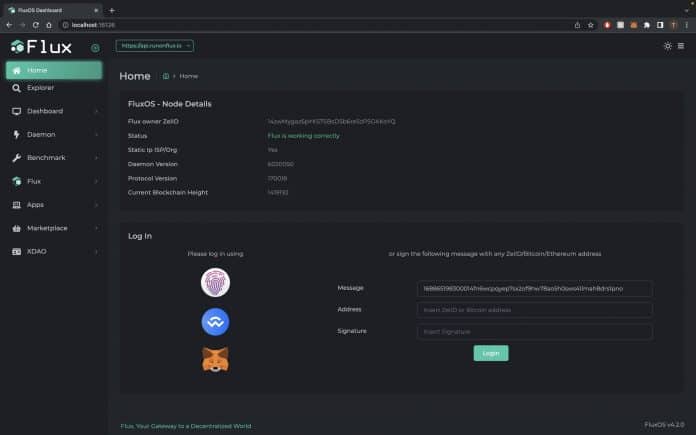FluxOS v4 went live today with over 8,800 nodes already updated. It brings with it several crucial updates for end users, focusing on reliability, security, flexibility, and scalability. Let’s delve into why these updates are significant and how they transform the user experience of FluxOS.
1. Node Benchmarking
This feature is a huge leap towards ensuring more reliability and trust in the Flux network. The introduction of an ‘Enterprise Score’ gives more insight into node performance and reliability. This rating system is vital because it encourages node operators to improve their performance and reliability by providing a tangible measure of their contribution to the network.
2. Private Images
With the addition of the ‘repoauth’ specification, FluxOS v4 now supports private images from Docker hub and other Docker container registrars. This is important for the enterprise clients as it allows them to run proprietary applications with sensitive data on FluxOS securely.
3. Secrets
This feature allows users to specify environment parameters that get encrypted, providing an additional layer of security for sensitive application data for certain nodes. This improvement brings FluxOS one step closer to meeting the security needs of enterprise-grade applications.
4. Static IP
The static IP feature, as simple as it may seem, is a game-changer for many applications that require a fixed IP address for various reasons, like DNS configuration or firewall settings. This feature significantly broadens the array of applications that can comfortably run on FluxOS.
5. PGP Identity
The introduction of PGP ECC keypair for nodes provides a robust encryption mechanism, adding another layer of security to the network. This feature reinforces the commitment of FluxOS to ensure the confidentiality and integrity of the data running on the network.
6. Pricing Updates
Pricing updates offer more flexibility and fairness in pricing, with price adjustments based on the complexity and requirements of the application. This creates a more balanced ecosystem where resource usage is more closely aligned with cost.
7. Port Range Changes
By opening up the full range of ports, FluxOS v4 becomes more compatible with a broader variety of applications. The distinction between banned and enterprise ports helps maintain the integrity of the network while still providing flexibility for enterprise applications.
8. Application Internal Networking Scheme Change
This is a crucial update as it corrects the previous network assignment that sometimes resulted in assigning public IP addresses. This fix not only eliminates potential security risks but also provides a more predictable networking environment for applications.
9. Decoupling Syncthing Process
This improvement enhances the reliability of the network by reducing unnecessary restarts of the Syncthing process.
10. User Defined Blocked Ports List
This feature is a significant upgrade for home hosting and port forwarding scenarios, where users can customize their blocked ports to avoid conflicts with other devices on the network.
These FluxOS v4 updates are a monumental step forward for the network. These enhancements not only increase the security, reliability, and flexibility of the network, but they also make FluxOS more accessible and user-friendly, both for enterprise clients and for individual users. This results in a more robust and scalable platform that can effectively support a wider range of applications.
Thanks for reading and if you enjoy my content please follow me on twitter.
Learn More about Flux
- Website – https://runonflux.io/
- Twitter – https://twitter.com/RunOnFlux
- Discord – https://discord.gg/d9VwzEbgTR


